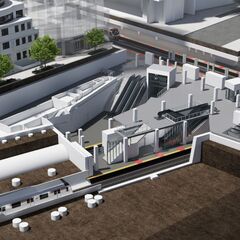My apologies if the material has been discussed before, but the discussion did not take part in this thread. My opinion is that the money spent on this (which will be substantial and will drag on over many years) could be better used expediting other projects.
According to Metrolinx's
Yonge Relief Network Study, having a full DRL to Sheppard has a very substantial impact on Line 1 ridership and Yonge-Bloor transfer volumes, and would shave about a third (11 600 pphpd) off of downtown-bound Yonge volume and a quarter from downtown bound BD volume (7 100 pphpd). This would appear to allow ample room for the Yonge North subway extension.
View attachment 179806
According to the
Yonge subway extension recommendations, the additional ridership due to the extension in 2031 would be 8 400, less than the drop due to the DRL. This study didn't consider the prospect of an attractive RER network siphoning off long-distance ridership.
Note that most of this ridership would likely be continuing on downtown, not transferring at Yonge/Bloor, so as long as the DRL continues to offer a more efficient ride into downtown the transfer situation will not be considerably worse.
There are other capacity mitigations that offer better value for money that can be deployed instead of rebuilding our very constrained key transfer station:
- Implementing RER on the Stouffville, Richmond Hill and Barrie lines, which are more suited to long-distance travel and run parallel to the Yonge line.
- Continuing to extend the DRL north of Sheppard to intercept traffic destined to the Yonge North extension
- Extending the DRL west and north to intercept BD to Yonge transfer traffic
- Implementing Platform Screen Doors, as a safety and reliability improvement
In general, we should aim to spend on improving the resilience of the network by offering attractive alternative routes, rather than putting all of our eggs in the line 1 basket in rebuilding our 1950s-era stations.



















